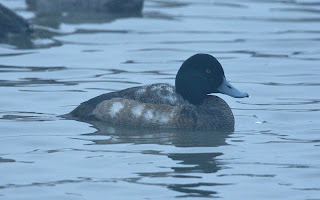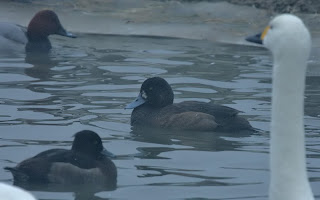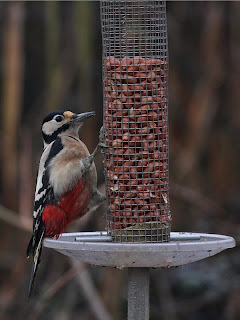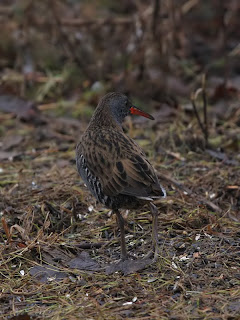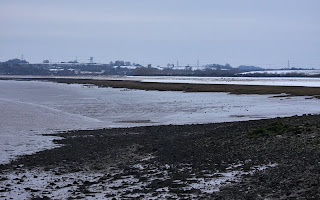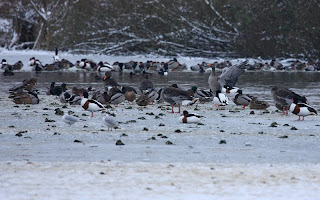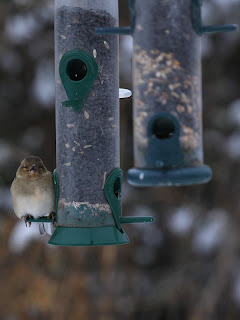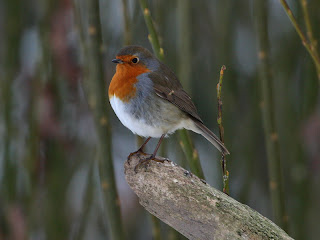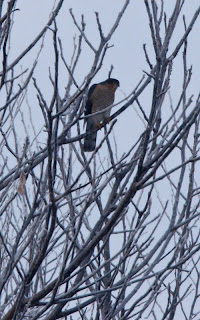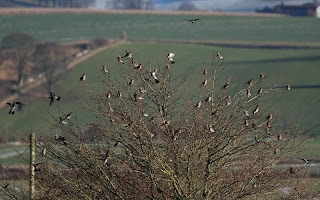Mostly frustrating, to be honest.
At Exminster Marshes between 0900hrs and 1030hrs, there was no sign of any Harriers. Teal, Wigeon, Shoveler, Black-tailed Godwit, Redshank, Lapwing, one Grey Heron, one Kestrel, one Buzzard picking apart a prey item, Redwing, various Tits, one Bunting sp., Grey Plovers. Alas, I could not find the Water Pipits... or they wouldn't find me. Oh, and there were Canada Geese - truly a rarity.
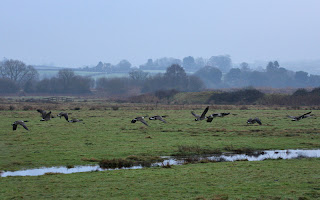
I know that before midday a female Marsh Harrier, ringtail Hen Harrier and a couple of Bitterns showed, but I think (or hope, actually) that I had moved on by then.
Undeterred, I moved onto Dawlish. Not the Warren, but a two and a half hour stint atop Langstone Rock. This was the most profitable portion of the day. The sea was rough but there was plenty of action. At least 30 Gannets, 5 Oystercatchers flew past, many Great-crested Grebes and one Little Grebe were the run of the mill stuff. I didn't see any Black-necked or Slavonian Grebes, or - most disappointingly - no Eiders. Still, there was a flock (c.15 birds) of Common Scoter (year tick 211; lifer 223) with another group of six or seven birds flying past, four Black-throated Divers (year tick 213; lifer 225) on the water and one Red-throated Diver (year tick 212; lifer 224). I expect there were more about but I'm quite the novice at sea watching. Many Razorbills flew past. A few landed on the water, some of which I reckoned were Guillemots (a hoped for year tick) but I just wasn't sure. I don't think I would've been able to pick out the female Surf Scoter had I seen it (I don't think I did). I thoroughly enjoyed the sea-watch though, and will definitely do it more regularly next year - ideally before the end of winter.

There were also trains. Frequent trains.
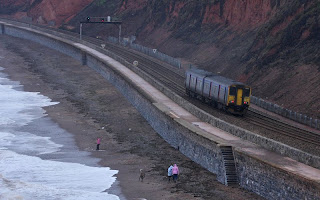
The fog wasn't proving a problem, so at about 1330hrs I decided to hit the last big target of the day - Cirl Buntings. Off I went to Labrador Bay. Hmmmmmmmmmmmmmmmmm. Upon arrival it became clear that all the fog had congregated there. It was horrendous. One couldn't see more than a few meters ahead, it was very cold and the wind was howling. In short there was no chance of seeing a Cirl. Even being outside was quite a challenge, and not in the way that it's a challenge to get out and about in snowy conditions. This was truly unpleasant. The Cirls will have to wait for another day. On the plus side, at least I know the way.
I decided to go back to Exminster Marshes to use the remaining daylight hoping the Hen Harrier would show for me. Needless to say it did not, and neither did the Water Pipits. I decided that if I strayed too far from the scrapes (to find the redhead Smew, for example) I would miss something. In retrospect I can safely say I would've missed nothing. Except Starlings...
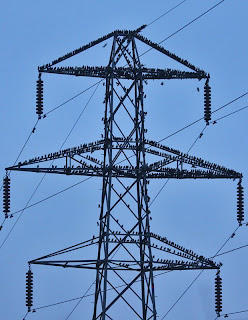
Should've gone back to Dawlish, really. The Exe area is smashing for birds though. Part of the problem is choosing where to go - so many places to pick from. I think my next sortie will involve a good study of the estuary, another pop at the Cirl Buntings and more time on Langstone Rock. Orcombe Point and Broadsands are two other spots I hear good things about.
A mixed day. I'm pleased to have added three more birds to both my year list and life list, but to be honest I had hoped for more. I seem fated to forever miss Hen Harriers. I think my birding new year resolution has to be to make better decisions. I know that it's a lot to ask to get everything one wants in one day trip, but I rarely seem to get above a 50% 'hit rate', which IMO needs to be improved in 2011.
So (of desirables) did see:
Common Scoter
Red-throated Diver
Black-throated Diver
Didn't see:
Cirl Bunting (weather prevented it)
Eider
Slavonian Grebe
Hen Harrier
Water Pipit


